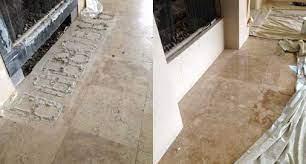Introduction
Stone, with its inherent durability and captivating beauty, has been a cornerstone of human architecture for millennia. From ancient temples to historic landmarks, these structures bear witness to the passage of time. However, the effects of weathering, pollution, and neglect can take their toll on even the most robust of stones. Stone restoration services are essential in revitalizing these venerable structures, preserving their historical and cultural significance for generations to come.
I. The Enduring Significance of Stone
1.1. Stone's Historical Legacy
Stone has played a central role in the evolution of human civilizations. Its use in construction dates back thousands of years, from the megalithic structures of antiquity to the intricate stonework of Gothic cathedrals.
1.2. Architectural and Cultural Significance
Many iconic structures around the world, such as the Pyramids of Giza, the Acropolis, and Machu Picchu, owe their grandeur and longevity to the enduring qualities of stone. These architectural marvels not only serve as cultural landmarks but also embody the artistic, religious, and technological achievements of their respective societies.
II. The Challenges of Time: Stone's Natural Decay
2.1. The Impact of Natural Elements
Stone structures are constantly subjected to the forces of nature, including rain, wind, temperature fluctuations, and seismic activity. Over time, these elements can lead to erosion, weathering, and the weakening of stone surfaces.
2.2. Human-Induced Deterioration
Beyond natural elements, human activities such as pollution, vandalism, and improper maintenance practices can expedite the degradation of stone surfaces.
III. Stone Restoration Services: A Comprehensive Approach
3.1. Thorough Assessment and Documentation
The restoration process commences with a meticulous assessment of the stone structure's condition. This involves documenting existing damage, understanding the original construction techniques, and identifying the type of stone used.
3.2. Expert Cleaning and Surface Preparation
The initial step in stone restoration involves the careful cleaning of the stone surface. This process entails the removal of dirt, biological growth, and any accumulated pollutants. The techniques employed vary based on the type of stone and the nature of the contamination.
3.3. Skilled Repair and Replacement
Damaged or missing stones must be expertly repaired or replaced. Skilled artisans utilize compatible materials and techniques to seamlessly integrate new elements into the existing structure, ensuring the integrity and aesthetics of the original design.
3.4. Structural Stabilization and Consolidation
In cases where the stone is structurally compromised, consolidation methods are employed to strengthen the material. This may involve the application of consolidants or the strategic reinforcement of the stone with stainless steel pins.
IV. The Science of Stone Restoration
4.1. Material Compatibility and Selection
Selecting restoration materials that are compatible with the original stone is paramount to ensure the longevity of the restoration work. This includes considerations of porosity, hardness, and thermal expansion coefficients.
4.2. Climate and Environmental Adaptations
Understanding the local climate and environmental conditions is crucial in determining the appropriate restoration techniques and materials. For example, regions prone to high humidity may require different approaches than arid climates.
4.3. Advanced Techniques and Innovations
Modern stone restoration benefits from technological advancements. Techniques like laser cleaning, 3D scanning, and nanotechnology coatings enhance the precision and efficacy of restoration work, allowing for even greater attention to detail.
V. Preserving History for Posterity
5.1. Cultural Heritage Conservation
Stone restoration services serve as the guardians of cultural heritage. These restored structures not only offer a glimpse into the craftsmanship and technology of the past but also act as educational tools, instilling a deeper appreciation for our shared human history.
5.2. Sustainable Practices in Restoration
Embracing sustainable practices in stone restoration involves the use of eco-friendly materials and techniques. This not only minimizes the environmental impact but also ensures the long-term preservation of the restored structure.
Conclusion
Stone restoration services represent a harmonious blend of artistry and science, breathing new life into ancient and medieval structures. Through meticulous assessment, cleaning, repair, and preservation, skilled artisans and conservationists ensure that these architectural treasures continue to inspire and educate future generations. With dedication and expertise, we bridge the gap between the past and the future, allowing history to stand strong for centuries to come. Stone restoration services are not just a service; they are a testament to our commitment to preserving the legacy of human achievement for generations to come.
